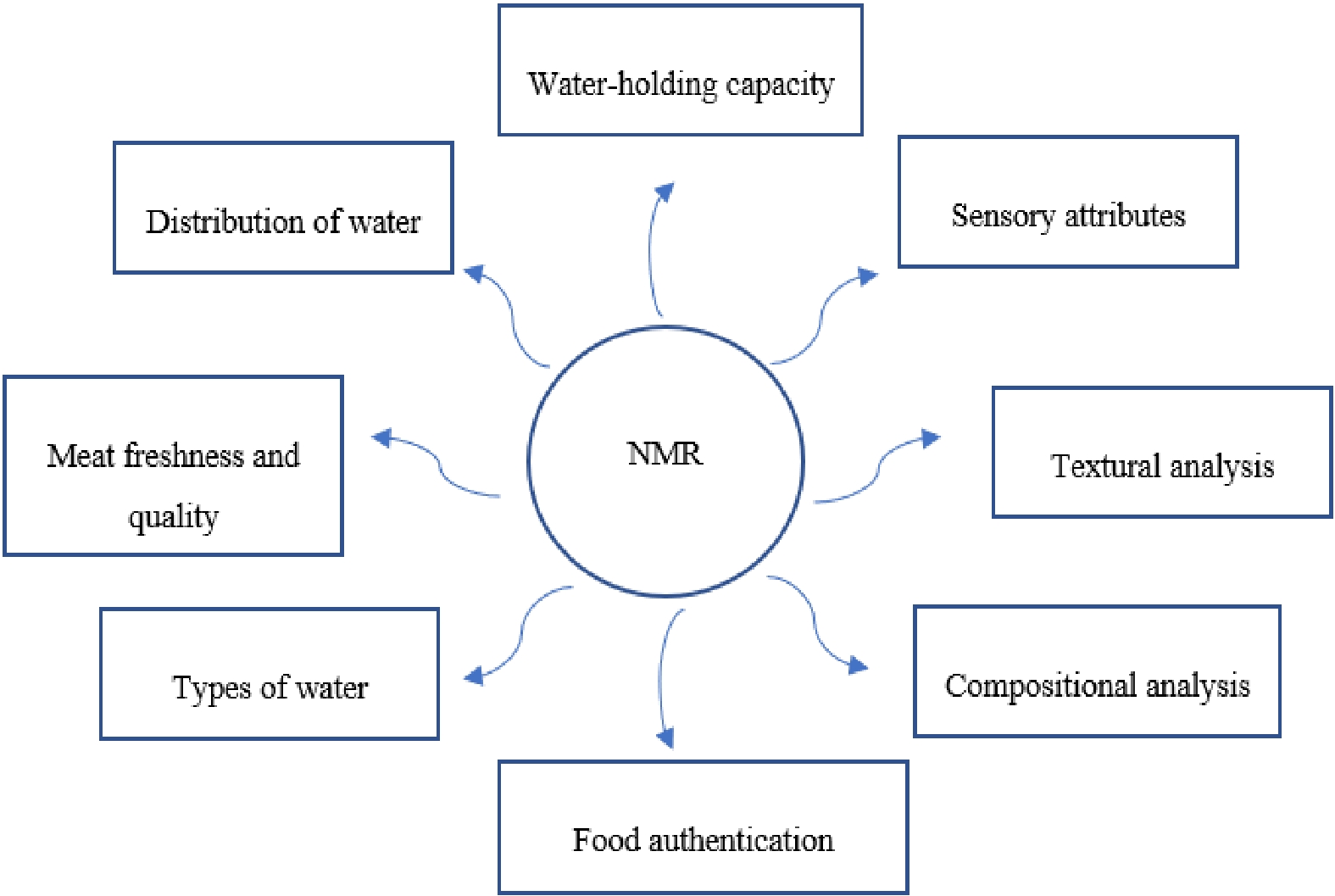-

Figure 1.
Scope of NMR in the meat industry.
-

Figure 2.
Description of NMR relaxometry in meat samples.
-
NMR technique Food examination Reference Low field nuclear magnetic resonance Ice crystal sizes and water and oil migration during frozen storage and cooking of stuffed fish balls Fan et al.[66] 1H NMR Metabolic profile analysis of ground beef at different irradiation doses Zanardi et al.[67] High resolution NMR Lipid oxidation in Italian dry-cured α-tocopherol enriched pork sausages Siciliano[68] 23Na nuclear magnetic resonance spectroscopy Assessment of the sodium binding state in salted pasta, chicken, carrot and trout El Sabbagh et al.[69] 60 MHz 1H NMR spectroscopy Authentication of beef versus horse meat Jakes et al.[23] 1H NMR spectroscopy Lipid profile analysis of pig-bred and traditionally reared categories of Iberian dry-cured hams Pajuelo et al.[ 70] 1H NMR based metabolomics Identification of geographical origin of beef Jung et al.[44] 1H NMR spectroscopy Evaluation of changes in polar metabolite concentrations in beef during storage Graham et al.[ 46] NMR Quantitation of moisture and structural alterations in chicken meat cooked by convection Shaarani et al.[27] NMR spectroscopy Evaluation of the effects of irradiation dose (0, 1, 2 and 6 kGy) and storage time (1, 6 and 12 days) on the metabolic changes in pork tenderloin García-García et al.[ 71] 1H NMR Determination of cyclopropane fatty acids in meat and fish Lolli et al.[60] NMR Sensory evaluation of chicken and fish protein hydrolysates Steinsholm et al.[72] LF NMR Water component analysis of meat during cooking Micklander et al.[73] LF NMR Effect of thawing on the quality of frozen rabbit meat Jia et al.[74] LF NMR Moisture content determination of beef Jakes et al.[23] LF NMR Determination of water activity in chicken Venturi et al.[75] Table 1.
Use of NMR in meat quality assessment.
Figures
(2)
Tables
(1)